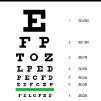-
Posts
858 -
Joined
-
Last visited
-
Days Won
1

Prior owner replied to Skydancer2992's topic in Vintage Mooneys (pre-J models)

Prior owner replied to Gary0747's topic in Vintage Mooneys (pre-J models)

Prior owner replied to cferr59's topic in Vintage Mooneys (pre-J models)

Prior owner replied to GDGR's topic in Vintage Mooneys (pre-J models)

Prior owner replied to cferr59's topic in Vintage Mooneys (pre-J models)

Prior owner replied to cferr59's topic in Vintage Mooneys (pre-J models)

Prior owner replied to GDGR's topic in Vintage Mooneys (pre-J models)

Prior owner replied to cferr59's topic in Vintage Mooneys (pre-J models)

Prior owner replied to FastTex's topic in Vintage Mooneys (pre-J models)

Prior owner replied to ragedracer1977's topic in Vintage Mooneys (pre-J models)

Prior owner replied to ragedracer1977's topic in Vintage Mooneys (pre-J models)

Prior owner replied to ragedracer1977's topic in Vintage Mooneys (pre-J models)

Prior owner replied to ragedracer1977's topic in Vintage Mooneys (pre-J models)

Prior owner replied to Badmoonraising's topic in Vintage Mooneys (pre-J models)

Prior owner replied to Prior owner's topic in Vintage Mooneys (pre-J models)

Prior owner replied to Prior owner's topic in Vintage Mooneys (pre-J models)

Prior owner replied to RDuplechin's topic in Vintage Mooneys (pre-J models)
We have placed cookies on your device to help make this website better. You can adjust your cookie settings, otherwise we'll assume you're okay to continue.